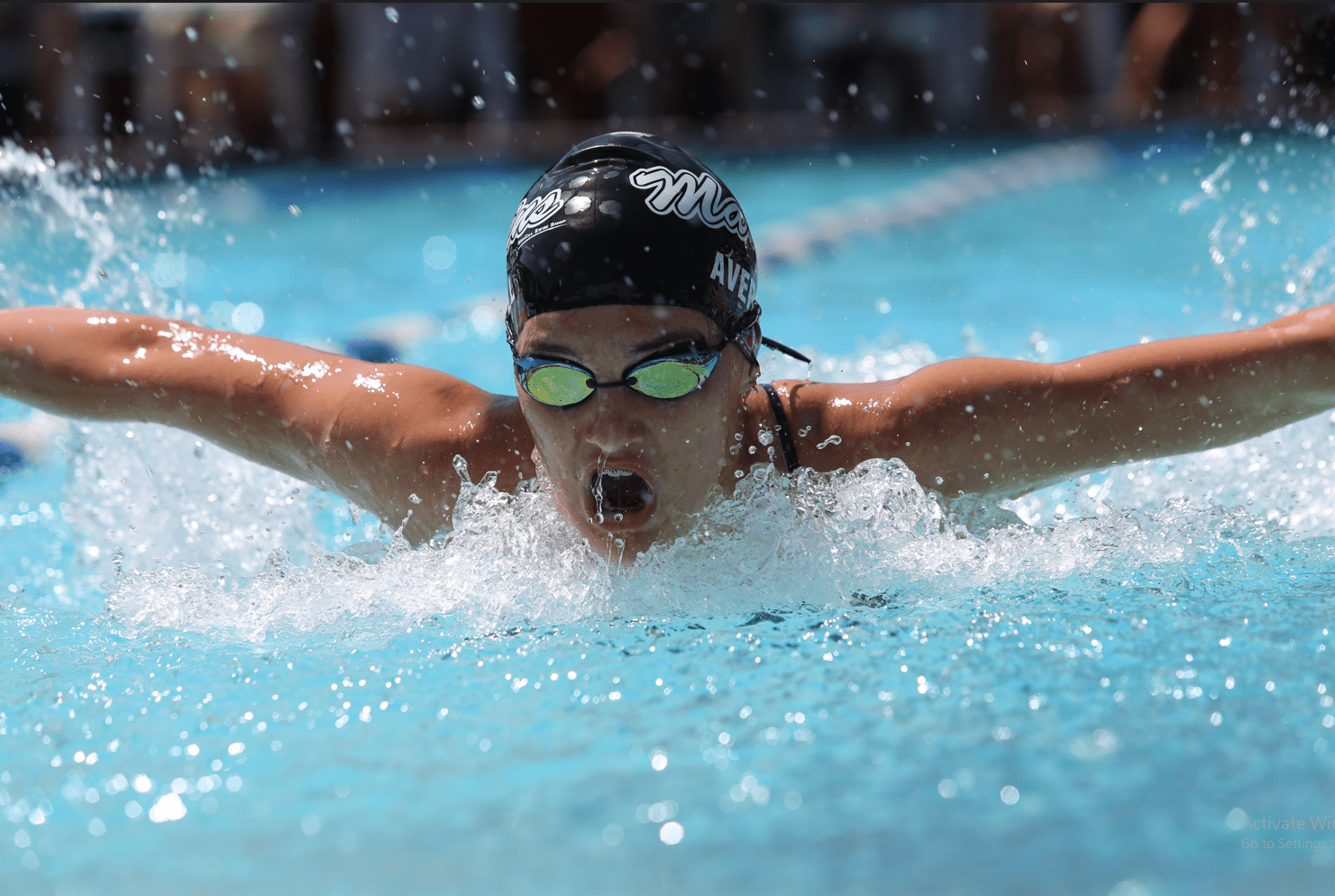Introduction:- Competitive swimming is an exhilarating and demanding sport that has captured the hearts of athletes and spectators alike for decades. Whether you are a seasoned swimmer or just dipping your toes into the pool, understanding the fundamental rules of competitive swimming is crucial. In this article, we will dive into the world of competitive swimming and explore the rules that govern this popular sport, ensuring that you have a comprehensive understanding of how races are conducted and how swimmers can excel within the guidelines.
The Swimming Pool
Before we delve into the rules of competitive swimming, it’s important to establish the primary environment where these races take place: the swimming pool. Pools used in competitive swimming typically adhere to specific dimensions and standards to maintain fairness and consistency in races.
-
Pool Length: Most competitive swimming pools are either 25 yards (short course) or 50 meters (long course) in length. Swimmers must be aware of the pool’s length to gauge their race strategy correctly.
-
Lanes: Pools have a specific number of lanes, usually ranging from 6 to 10, where swimmers are assigned to race. Each lane is separated by lane lines, and swimmers are expected to stay within their designated lane throughout the race.
-
Starting Blocks: Swimmers begin races from starting blocks, which are elevated platforms at the edge of the pool. These blocks allow swimmers to start in a streamlined position and gain an advantage in the initial moments of the race.
The Four Competitive Strokes
Competitive swimming consists of four primary strokes, each with its own set of rules and techniques. These strokes include freestyle, backstroke, breaststroke, and butterfly.
-
Freestyle: In freestyle races, swimmers are free to choose their preferred stroke, typically front crawl, but some may use the more traditional side stroke or backstroke. The only rule to remember is that there are no restrictions on technique as long as the swimmer remains on the surface of the water and follows standard pool and lane regulations.
-
Backstroke: In backstroke, swimmers start in the water and must stay on their backs throughout the race. They are allowed to use an alternating flutter kick and a continuous, alternating motion with their arms.
-
Breaststroke: In breaststroke, swimmers must perform simultaneous arm and leg movements. The stroke begins with a simultaneous arm pull and a frog kick, followed by a simultaneous arm recovery and another frog kick. Swimmers must touch the wall with both hands simultaneously before turning or finishing a race.
-
Butterfly: The butterfly stroke is one of the most challenging and aesthetically pleasing strokes. Swimmers use a simultaneous arm motion and a simultaneous dolphin kick, which must be maintained throughout the race. Like in breaststroke, swimmers must touch the wall with both hands simultaneously at turns and finishes.
Starts and Finishes
Starts and finishes are critical moments in competitive swimming and are governed by specific rules to ensure fairness and maintain the integrity of the sport.
-
Starts: Swimmers use starting blocks to begin races. They are allowed to take one “flyover” stroke underwater after the start and before surfacing. The swimmer must surface by the time they have reached 15 meters in a 25-meter pool or 7 meters in a 50-meter pool in all strokes except butterfly, where the swimmer must surface after the first arm pull.
-
Finishes: To finish a race, swimmers must touch the wall with any part of their body. In freestyle and backstroke, this means the swimmer can reach the wall with their hand, while in breaststroke and butterfly, they must touch with both hands simultaneously. Swimmers are not allowed to touch the wall with their feet during a finish.
Turns
Turns are crucial in any competitive swimming race, as they can make the difference between winning and losing. Each stroke has specific turn rules that swimmers must follow.
-
Freestyle and Backstroke Turns: Swimmers can perform a somersault turn in freestyle and backstroke, allowing them to change direction quickly and efficiently. After the turn, they must surface before the 15- or 7-meter mark (depending on pool length) to avoid disqualification.
-
Breaststroke and Butterfly Turns: In breaststroke and butterfly, swimmers execute an open turn, which involves touching the wall with both hands simultaneously and then pushing off the wall with both hands simultaneously. The legs are required to be in the same position during the turn and the finish.
Breathing
Proper breathing technique is essential in competitive swimming. Swimmers must know when and how to take a breath to optimize their performance and maintain their stamina throughout the race.
-
Freestyle: Swimmers breathe as needed during the freestyle stroke. Most opt for a rhythmic bilateral breathing pattern, taking a breath every two or three strokes to maintain a steady rhythm.
-
Backstroke: Since swimmers race on their backs, breathing in backstroke is natural and unrestricted. Swimmers can breathe whenever necessary.
-
Breaststroke: Breathing in breaststroke follows the stroke’s rhythm, with swimmers taking a breath during the arm pull and another during the recovery phase. Swimmers must not submerge their heads during the stroke.
-
Butterfly: Butterfly breathing is challenging as swimmers must maintain a continuous, simultaneous arm and leg motion. Swimmers usually take a breath during the arm pull, keeping their head above water, and then return their face to the water as the arms recover.
Turn and Finish Touch Rules
Touching the wall correctly during turns and finishes is a critical aspect of competitive swimming. Swimmers must ensure their touches are legal to avoid disqualification.
Explore the world of sports with our latest updates jasprit jasbirsingh bumrah and shikhar dhawan, scores, and in-depth analysis. Stay ahead in the game with us
-
Two-Hand Touch: In breaststroke and butterfly, both hands must touch the wall simultaneously during turns and finishes. Failing to do so can result in disqualification.
-
One-Hand Touch: In freestyle and backstroke, swimmers are required to touch the wall with one hand during turns and finishes. Touching with two hands may lead to disqualification.
-
Feet on the Wall: Swimmers are not allowed to use their feet to assist their turns or finishes. Doing so can result in disqualification.
Relays
Relay races are an exciting component of competitive swimming, adding a team element to the sport. Swimmers compete as part of a relay team, typically consisting of four members. The rules for relays are as follows:
-
Relay Exchange: Swimmers on a relay team must perform a legal relay exchange, which involves one swimmer finishing their leg and touching the wall, while the next swimmer begins their leg from a designated starting block.
-
Timing and Position: The next swimmer may leave the block as soon as the previous swimmer touches the wall, but the outgoing swimmer should not leave early, as this will result in disqualification.
-
Takeover Zone: The relay exchange is completed within a designated takeover zone, typically marked by a line on the pool deck. Swimmers must execute their exchanges within this zone to avoid disqualification.
Disqualifications
Competitive swimming has strict rules in place to maintain fairness and ensure the integrity of the sport. Swimmers can be disqualified for various infractions, including:
-
False Starts: Jumping the gun and starting before the signal is grounds for disqualification. Swimmers are allowed one false start without disqualification in non-championship races.
-
Stroke Violations: Deviating from the specific stroke rules, such as performing an illegal kick or pull, can result in disqualification.
-
Wall and Lane Violations: Swimmers must stay within their designated lanes and not use the lane lines or the pool wall to gain an advantage.
-
Relay Violations: Violations in relay races can lead to disqualification, such as leaving the starting block too early or finishing outside the takeover zone.
-
Late Arrival: Swimmers must be on time for their races and report to the starting area promptly. Failure to do so can result in disqualification.
Conclusion
Competitive swimming is a sport that combines speed, technique, and endurance, and its rules are essential to maintain fair competition and ensure the safety of swimmers. Understanding these rules is crucial for both athletes and spectators, as they provide the foundation for an exciting and competitive swimming experience. Aspiring swimmers should study and practice these rules to improve their skills, while fans can better appreciate the athleticism and precision required in this exhilarating sport. So, the next time you watch a competitive swimming race, you’ll have a deeper understanding of the rules that govern the pool, the strokes, and the exhilarating moments that make swimming a thrilling spectacle.













